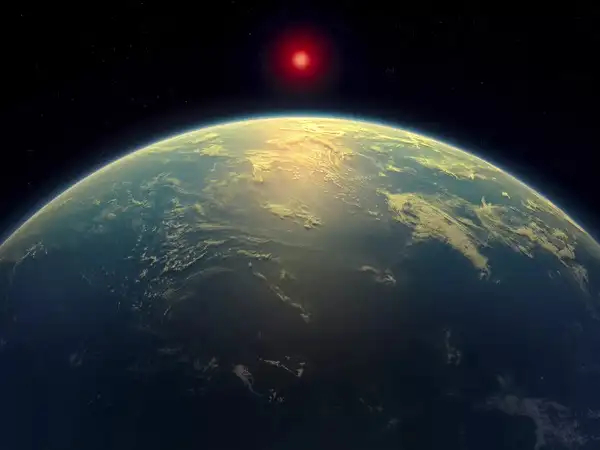NASA scientists may have found signs of life on the distant planet K2-18b. Learn how this discovery could change everything we know about the universe.

🌠 Are We Really Alone?
We’ve all looked up at the stars and wondered — is someone else out there?
That age-old question might finally be getting a hint of an answer.
In an incredible breakthrough, scientists have found possible signs of life on a planet far beyond our solar system.
The name of that planet? K2-18b. And it’s turning heads in the world of space science.
🔎 So, What Is K2-18b?
K2-18b isn’t your average planet.
It sits around 124 light-years away in the constellation Leo.
This planet is a type of “Hycean world” — meaning it might have a hydrogen-rich atmosphere and liquid oceans.
It’s 2.6 times the size of Earth, and it’s in the “Goldilocks zone.”
That’s the sweet spot where temperatures could allow for liquid water, and possibly, life.
🧪 What Did Scientists Discover?
Using the James Webb Space Telescope, NASA scientists studied the planet’s thick atmosphere.
They found methane, carbon dioxide, and most importantly — dimethyl sulfide (DMS).
Here’s the jaw-drop moment:
On Earth, DMS is only produced by life.
It usually comes from plankton floating in our oceans.
Finding DMS on another planet? That’s a major clue.
It doesn’t prove aliens exist, but it’s a very strong hint that something biological might be happening out there.
🚀 Why This Changes Everything
If these signals are confirmed, it could be one of the biggest discoveries in human history.
It would mean we’re not the only ones.
It could mean that life — even tiny, microscopic life — is more common in the universe than we thought.
And it could also mean that our search for alien life just got a lot more real.
Curious about space adventures?
👉 Take a look at our post: NASA’s Asteroid Flyby 2025 – What You Need to Know
🌍 What Happens Next?
Right now, the discovery is exciting — but it’s not yet confirmed.
Scientists will need more observations to be sure.
The good news? The James Webb Telescope is just getting started.
It may take months or even years.
But this discovery has already changed the game.
It gives us a real reason to believe that life might be waiting to be found.
🐙 From Deep Sea to Deep Space
This isn’t the first time science has surprised us.
Remember the colossal squid that was captured on camera in the deep ocean?
A creature long thought to be mythical suddenly appeared before our eyes.
👉 Read the wild story: Colossal Squid Captured on Camera – A Rare Deep-Sea Encounter
Whether it’s under the sea or in the stars — nature has a way of keeping us amazed.
📢 What the World Is Saying
Major science sites and global news outlets like America112 are covering this moment closely.
Some scientists are calling it the most promising clue we’ve ever seen in the search for alien life.
People across the globe are reacting with wonder, curiosity, and of course — lots of questions.
Could K2-18b have oceans like Earth?
Could tiny alien microbes be living in its clouds?
Could this be the beginning of something much bigger?
💬 A Personal Thought
Space can make us feel small.
But it can also make us feel connected — like we’re part of something greater.
This discovery reminds us that the universe is full of possibilities.
And maybe, just maybe, someone out there is looking up at their sky and wondering about us too.
🌌 Final Word
K2-18b may still be a mystery.
But it’s a beautiful one.
And as we continue to explore the stars, we’re reminded of something truly magical:
The universe is alive with questions — and we’re just beginning to answer them.
Stay tuned to Recital Blog for more stories that inspire, inform, and ignite curiosity.
The truth might be out there — and we’ll be right here, watching the stars.

